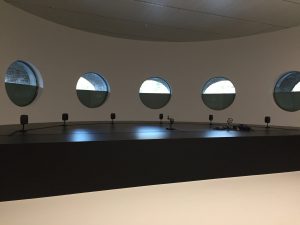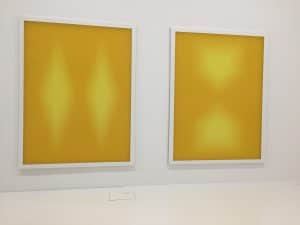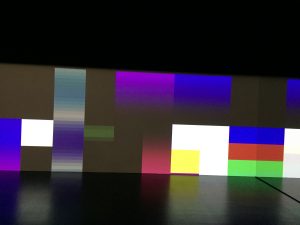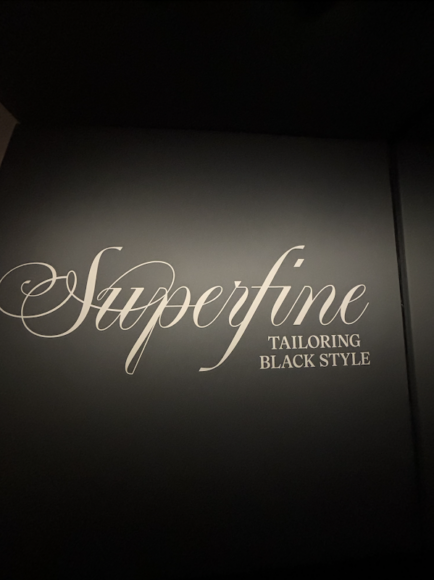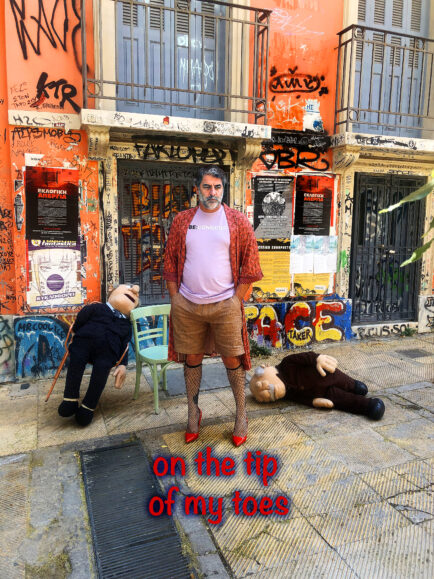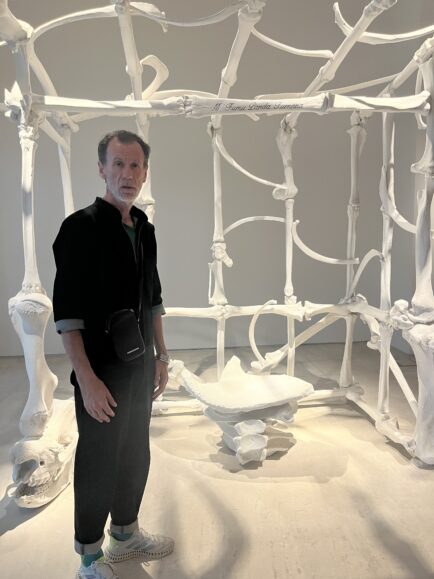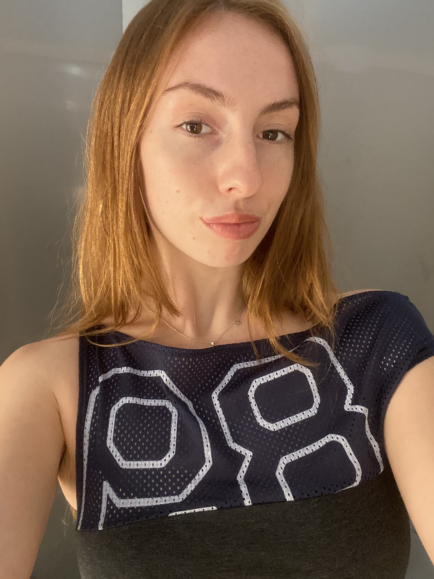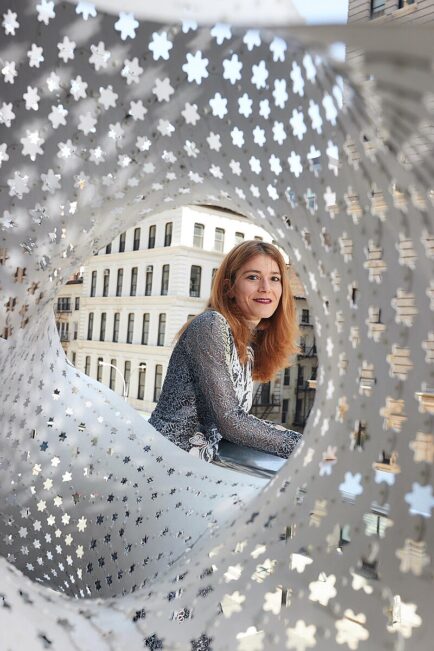Editor: Vasiliki Grammatikogianni
During my trip to Dusseldorf in order to take part to the tenth anniversary of the International Visitors Programme, organizers had arranged a visit to K21 and the exhibition ‘Parallax Symmetry’ by Carsten Nicolai, who is a musician and under the pseudonym, Alva Noto is one of the best-known representatives of contemporary electronic music of his generation.
The exhibition title alludes to the physical phenomenon of the parallax, which describes the apparent shift in an object’s position when viewed from different lines of sight.
The exhibition provides an overview of the work of the artist and musician Carsten Nicolai, who has been working at the interface of visual art, music, and science since the early 1990s.
Since his participation in Documenta X (1997), his visual artworks have also been exhibited worldwide. Using electronic sound and light, Nicolai creates minimalist installations, sound performances, and visualizations of physical phenomena that reflect systems and structures of the media world. In K21 he organized an expansive space on the lower floor as an open, dually laid outset for the presentation of roughly forty multimedia works, many of which are
designed for interaction” said Dr. Doris Krystof the curator of the exhibition.
Inspired by the invention of the phonograph, a predecessor of the record player, Rainer Maria Rilke wrote an essay in 1919 by the title ‘Primal Sound’ in which he describes a thought experiment. He reflects on the possibilities of transforming natural phenomena into
sound. Nikolai’s work record a reading of Rilke’s essay and acts as a kind of soundtrack to this exhibition.
In his work ‘tele’ (Greek for ‘at a distance), Nicolai illustrates the quantum physics phenomenon of quantum entanglement, which Albert Einstein skeptically described as “spooky action at a distance”. According to this idea, two electrons that are interconnected
share a kind of telepathic connection, even when they are galaxies apart. If one of these two particles changes, this has an immediate effect on the other, with no temporal delay whatsoever. Although this observation may not have been consistent with Einstein’s special theory of relativity, according to which nothing is faster than light, quantum physics has since confirmed its existence.
Tired light
The idea of ‘tired light’ was introduced by the physicist Fritz Zwicky , who believed that photons lose their energy when traveling great distances in the universe. The theory has since been proven false. Nicolai took the melancholy, poetic name of this theory as the title of a series of monochrome screenprints made with yellow polyester silkscreen. They seem to glow from within, while the motif appears blurry and indistinct.
Cluster
These sculptural objects refer to an experiment conducted by the architect Buckminster Fuller, who investigated the maximum density of multiple spheres within a space based on the so-called Kepler conjecture. The test spheres made a nickel silver was created by making casts of balloons filled with ping-pong balls.
Unicolor
“Unicolor” is the largest work in this exhibition and is based on the theories of the color of Johann Wolfgang Goethe, the Bauhaus artist Johannes Itten and some other art theorists.
“How we perceive colors is extremely interesting because it is always based on contrasts” Nikolai had said back to 2015 at the beginning of the exhibition.

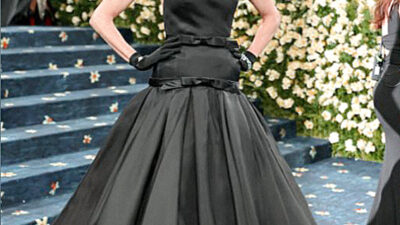







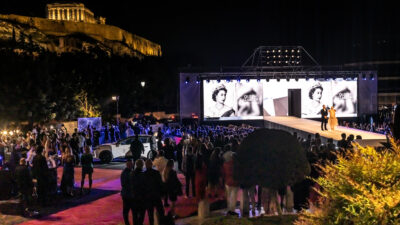
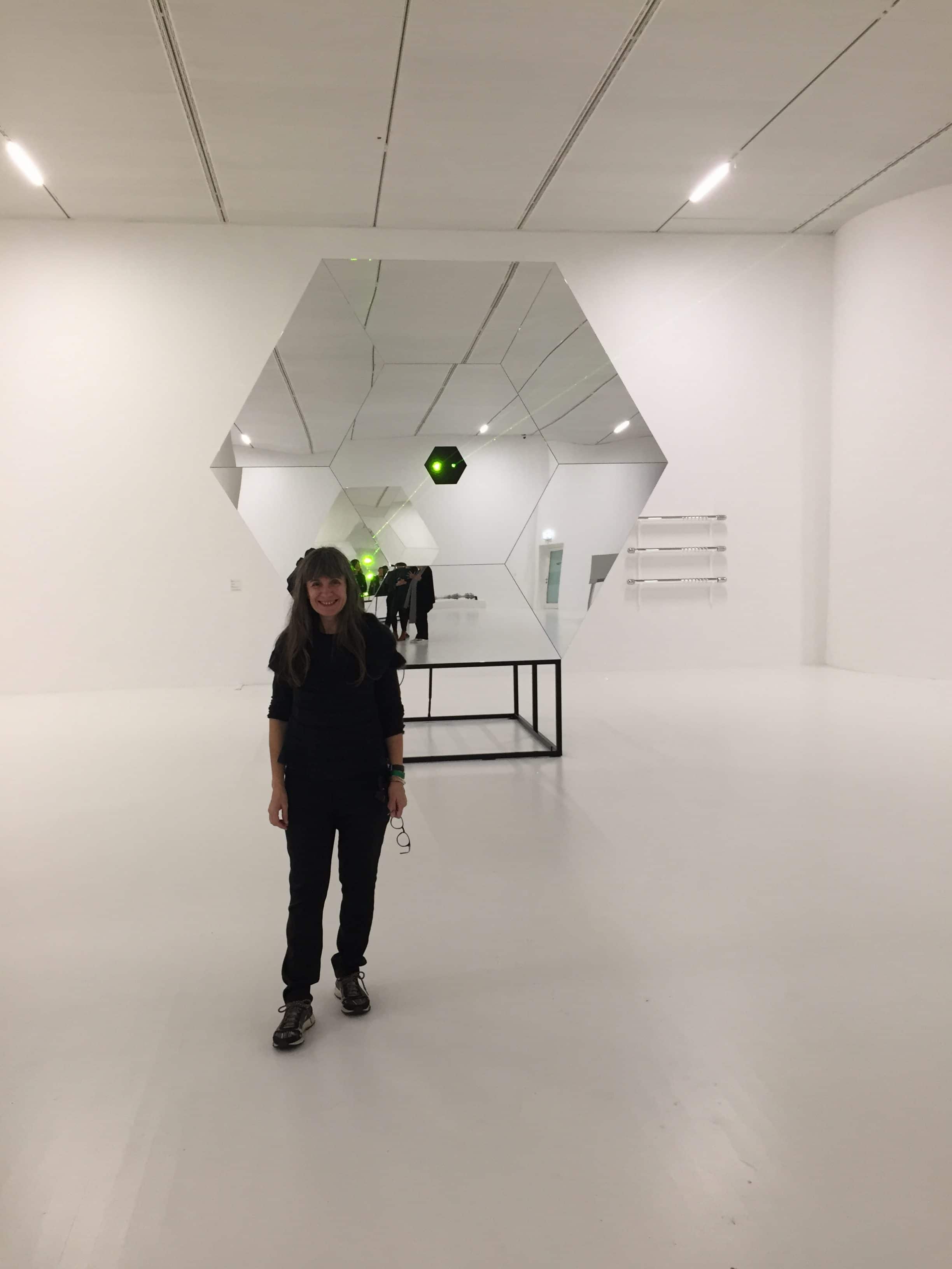
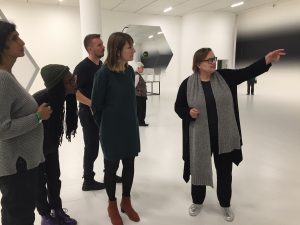 From left to right: Eva Lenhardt (Head of International Visitor Programmes), Dr.Doris Krystof (Curator of the exhibition).
From left to right: Eva Lenhardt (Head of International Visitor Programmes), Dr.Doris Krystof (Curator of the exhibition).